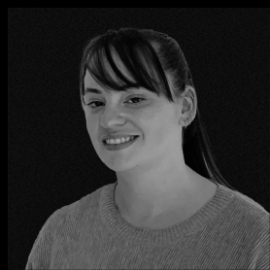
The challenges of achieving true organisational agility
Agile ways of working are collectively agreed upon by the tech industry, to be highly effective and align the nature of the industry, and its rapid evolution.
An agile organisation can swiftly adapt to changes, respond to customer needs, and innovate effectively.
So why do so many organisations struggle in adapting to a truly agile workplace?
Achieving true organisational agility isn't simple; it requires a complete transformation that often encounters difficulties.
What The Agile Manifesto is and where did it come from?
February 2001: 17 people gathered for an extended weekend in Utah, to discuss the future of software development. The group had intentions to resolve the frustrations frequently encountered by the wider industry - organisations placing too much focus on excessive planning and documenting of development cycles, the consequence of this was losing sight of customer satisfaction.
These frustrations were discussed over that weekend resulting in The Agile Manifesto.
-
Individuals and interactions over processes and tools
-
Working software over comprehensive documentation
-
Customer collaboration over contract negotiation
-
Responding to change over following a plan
While there is some value in the items on the right, Agile ways of working values the items on the left more.
The 12 principles of the Agile Manifesto:
-
Our highest priority is to satisfy the customer through early and continuous delivery of valuable software.
-
Welcome changing requirements, even late in development. Agile processes harness change for the customer’s competitive advantage.
-
Deliver working software frequently, from a couple of weeks to a couple of months, with a preference to the shorter timescale.
-
Businesspeople and developers must work together daily throughout the project.
-
Build projects around motivated individuals. Give them the environment and support they need and trust them to get the job done.
-
The most efficient and effective method of conveying information to and within a development team is face-to-face conversation.
-
Working software is the primary measure of progress.
-
Agile processes promote sustainable development. The sponsors, developers, and users should be able to maintain a constant pace indefinitely.
-
Continuous attention to technical excellence and good design enhances agility.
-
Simplicity–the art of maximising the amount of work not done–is essential.
-
The best architectures, requirements, and designs emerge from self-organising teams.
-
At regular intervals, the team reflects on how to become more effective, then tunes and adjusts its behaviour accordingly.
Challenges of implementation
These principles and values seem straightforward, right? So, what is it that interferes with an organisation in adapting an agile mindset?
Leadership buy-in & change management.
For successful implementation, it is imperative that you have top-level buy-in and active involvement. Without this, the implementation of agile practices will fail. Leaders set the tone for entire organisations, whether it is setting priorities, allocating resources, guidance during the necessary changes, or leading the way culturally.
A reluctant leader can hobble the entire process. It is critical that leadership creates a supportive environment that enables the adaptations of the new methodology.
Cultural factors
Transitioning to Agile framework requires a complete cultural shift. Agile methodologies emphasise on collaboration, adaptability, and continuous improvement. This can often clash with existing mindsets, ingrained work habits, and over reliance on existing hierarchies. This resistance to change is often rooted in fear of the unknown.
Overcoming these barriers requires a united effort to inspire a culture that embraces flexibility, encourages innovation, and values experimentation.
Insufficient training
In order for any transformation to be successful, it is essential that the entire team is equipped with the appropriate knowledge, skills and tools to succeed. Without adequate education on agile methodologies, tools, and practices, the most likely outcome will be misinterpretations that will lead to incomplete or incorrect implementations. Resulting in a hybrid approach that dilutes the benefits of agility. Comprehensive education, training, and guidance is vital to ensure everyone is on the same page and understands the purpose and mechanics of agile methodologies.
Investment in continuous learning and upskilling programs for everyone from top management to team members will empower employees to adopt and adapt to agile ways of working.
Siloed departments and processes
Many organisations operate under very soiled structures, where departments function independently and often do not share information. This is a contrast to of one of the core principles of agile methodologies; cross-functional collaboration. Aligning business units to work cohesively towards common goals can be an organisations’ greatest (and most common) challenge.
Cooperation across different departments and sharing information is essential for the creation of an agile business environment.
Documentation and Transparency
Agile manifesto promotes working software over comprehensive documentation, but lack of documentation could lead to issues with knowledge transfer, compliance, tracing of historical information, making it challenging for onboarding team members and getting them up to speed on project progress.
Commitment to continuous improvement
Agile methodologies thrive in environments that can quickly respond to change. However, adapting to constant change can be challenging, especially in workplaces accustomed to rigid structures and processes. Successful implementation requires a mindset shift towards adaptability and flexibility.
Agile ways of working are an ongoing journey, not a one-time change. It requires a sustained commitment to continuously improving processes, actively upholding agile principles, and not reverting to old, less flexible ways of operating.
Measuring Success and Effectiveness
Measuring success within an agile framework can be complex. Identifying the right metrics to gauge the progress and effectiveness is crucial.
Scaling these practices across larger, complex projects or organizations is a significant challenge. This requires a formulated approach. Typically, it works effectively in small, focused teams. However, by maintaining consistency, coordination, and ensuring that each team works cohesively - the goal can still be achieved on any scale.
Overall, the journey towards achieving true organisational agility is laden with various challenges. Overcoming these requires a comprehensive approach that addresses cultural transformation, leadership commitment, breaking down silos, balances stability with flexibility, scaling practices, provides adequate training, and defines appropriate metrics for measuring success.
Organisations striving for true agility must recognise that it is a complex, ongoing process that demands persistence, adaptability, and a deep commitment to change at every level of the organisation.

Written by Krystal Hamilton
Krystal comes with 10 years of IT project management experience to the Sentius team. She enjoys creating efficiencies and supporting the team in rolling out usable products for the clients. Originally from Sydney, Krystal enjoys living in the beautiful Victorian country and pottering in her vegetable garden. When she’s not working he magic at work, you can find her riding horses, her motorbike or spending time with her doggos. Equality, inclusion, and advocacy for ‘unseen’ illnesses are causes close to Krystal’s heart. Fun fact: Krystal is also a trained hairdresser (lucky for us, she retired from that career in 2007).

Written by Krystal Hamilton
Krystal comes with 10 years of IT project management experience to the Sentius team. She enjoys creating efficiencies and supporting the team in rolling out usable products for the clients. Originally from Sydney, Krystal enjoys living in the beautiful Victorian country and pottering in her vegetable garden. When she’s not working he magic at work, you can find her riding horses, her motorbike or spending time with her doggos. Equality, inclusion, and advocacy for ‘unseen’ illnesses are causes close to Krystal’s heart. Fun fact: Krystal is also a trained hairdresser (lucky for us, she retired from that career in 2007).
